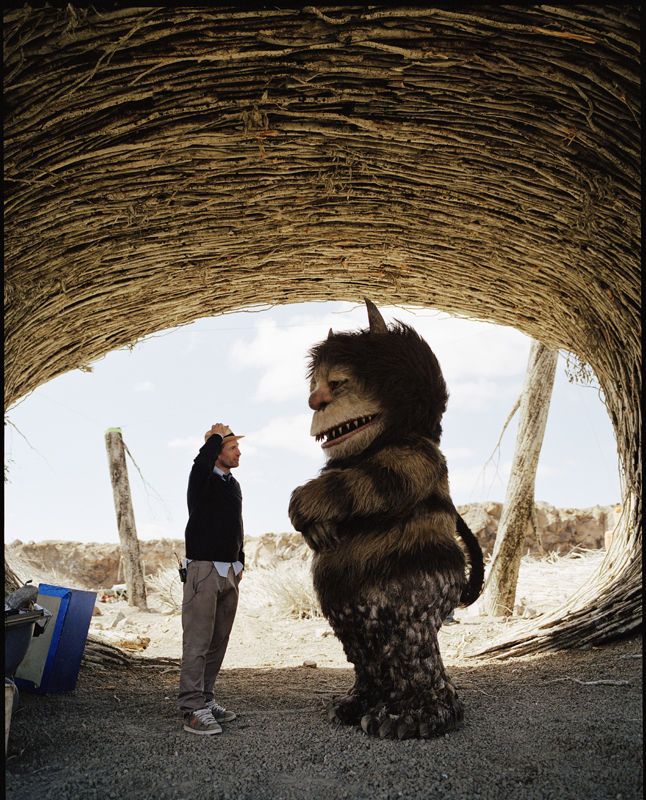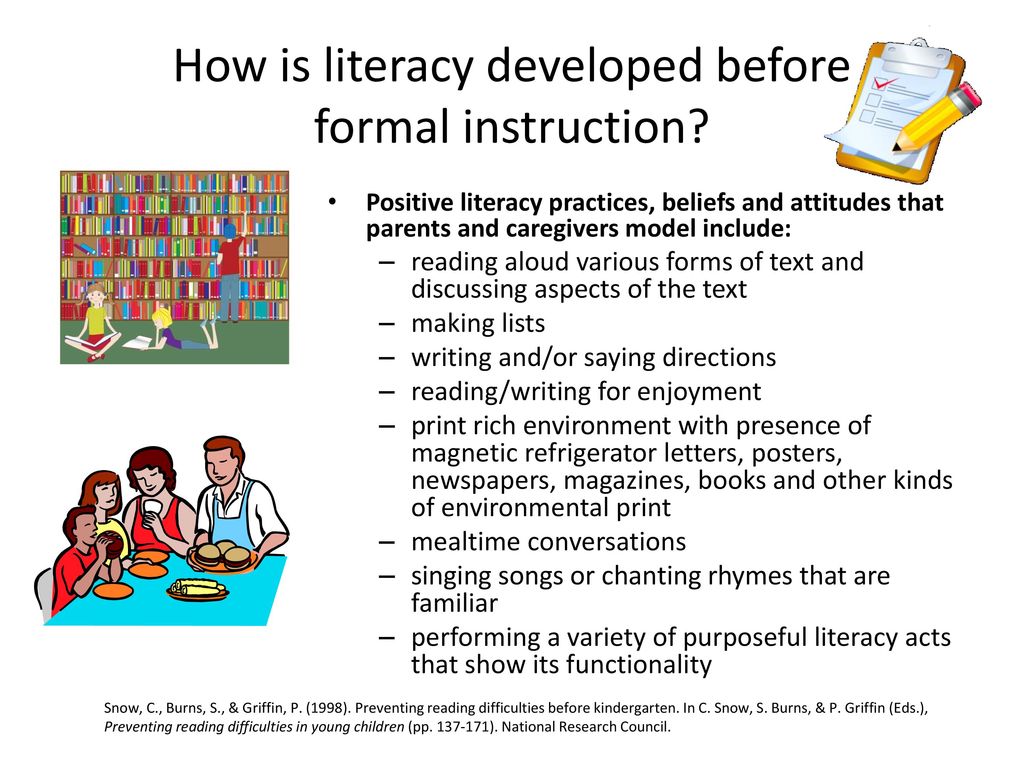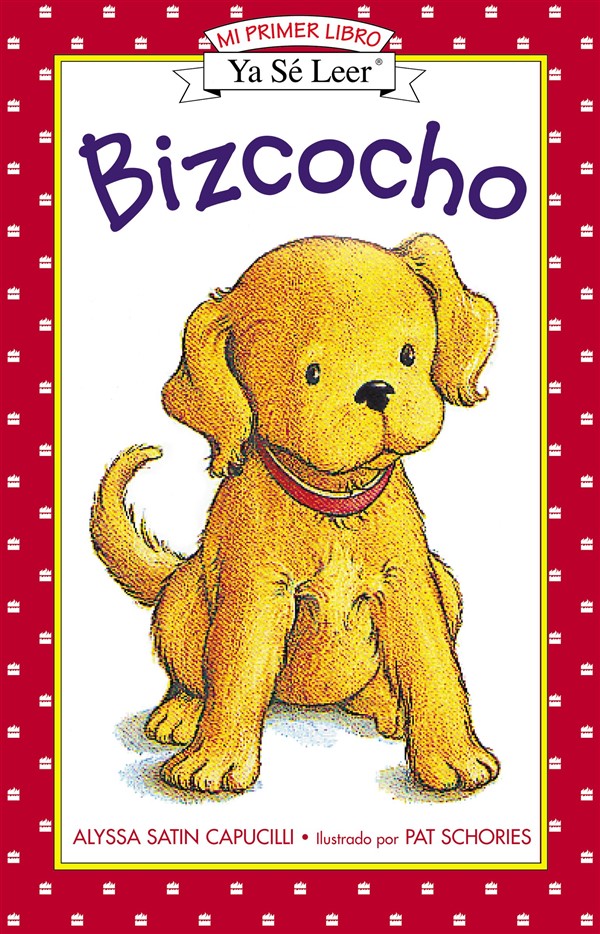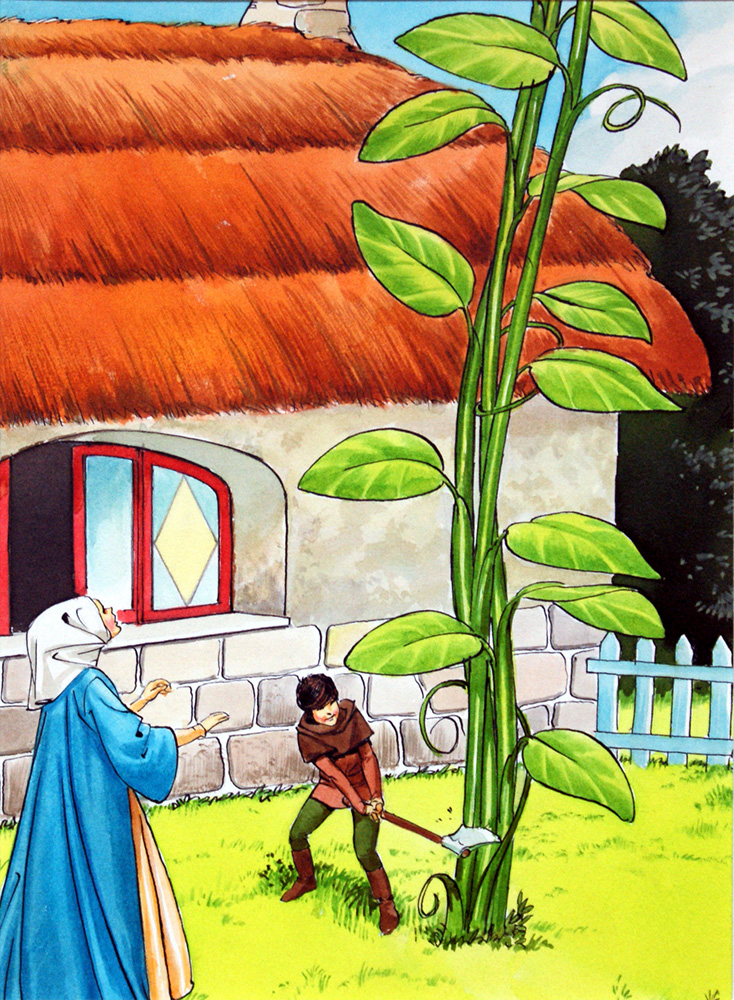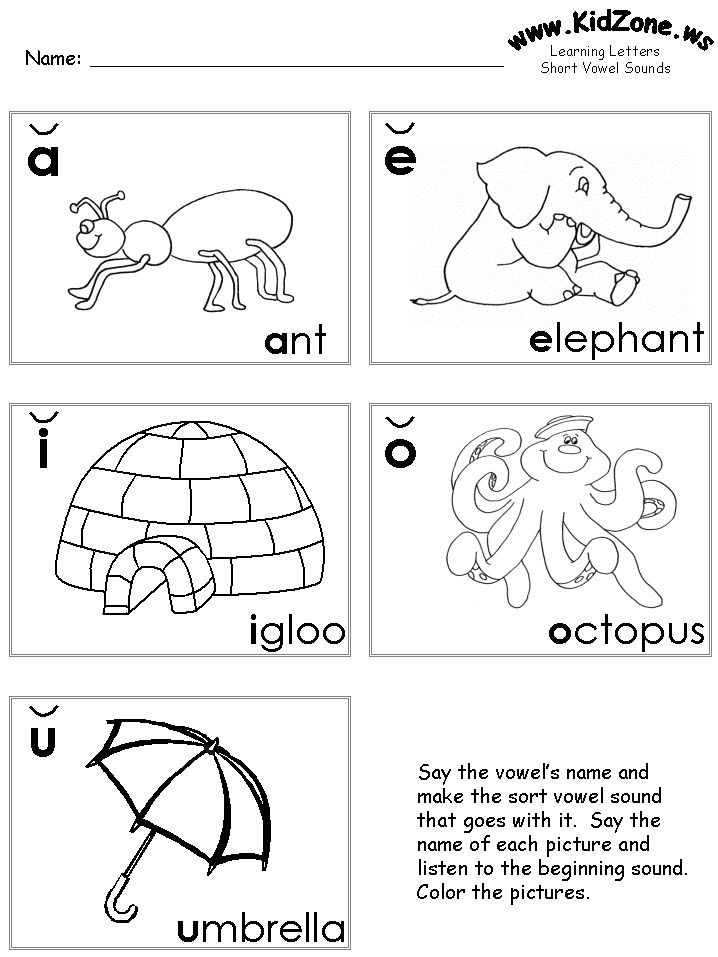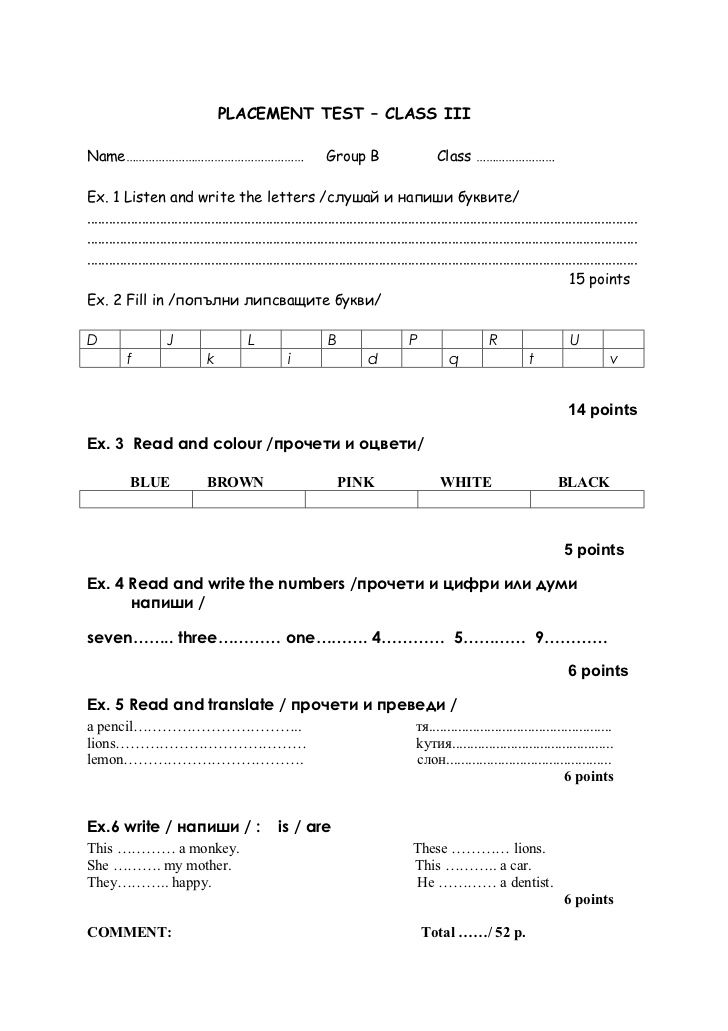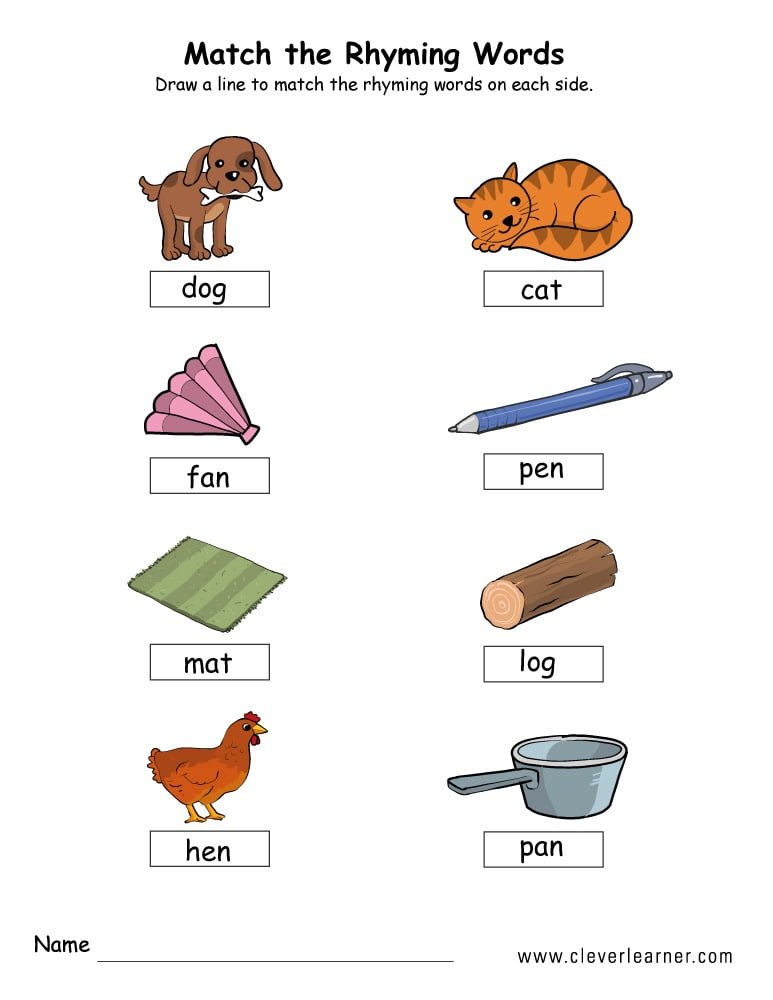Into the wild things
Where the Wild Things Are
Maurice Sendak’s Where the Wild Things Are consists of ten sentences, though in fairness a number of them are lengthy run-ons. The book is only 338 words long. Sendak uses “and” 33 times, which befits a book as breathless as this. “And” actually begins a full 40 percent of the sentences. The book takes between two and five minutes to read, depending on how many times you have to flip back and forth while your 18-month-old says something approximating “boat”.
If the language is simple, though, the themes are not. The book was originally published in 1963, long before the term “ADHD” found its way into the popular lexicon, which means that Max, the young hero, eludes easy diagnosis. He is rambunctious at best, out of control at worst. His saving grace is his imagination, which rescues him from the punishment of being sent to bed without any supper, at least until his mother relents.
Surely a book this beloved means different things to different people, so I won’t do anything as foolish as suggesting a definitive reading. My friend Jim told me that Where the Wild Things Are taught his son that not all monsters are bad. That strikes me as being a worthy realization. Personally, for as much as I connected with the imagination-trumps-all theme when I was growing up, I read the book today as a story about a kid who isn’t ready to stop being a kid. Let’s face it, though, that’s not entirely about the book.
I haven’t counted, but Spike Jonze’s recent version of Where the Wild Things Are seems to have more than ten sentences and 338 words. The movie runs 100-minutes, which means I could read it between 20 and 50 times from the opening to the closing credits. That would have to be some kind of a record.
Jonze has always inspired more admiration in me than passion. While I continue to believe that the Beastie Boys’ video for “Sabotage” is The Greatest Video of All Time, I find his features unsatisfying. Even the great-by-consensus Being John Malkovich receives high marks from me for concept, but only a middling score for follow through.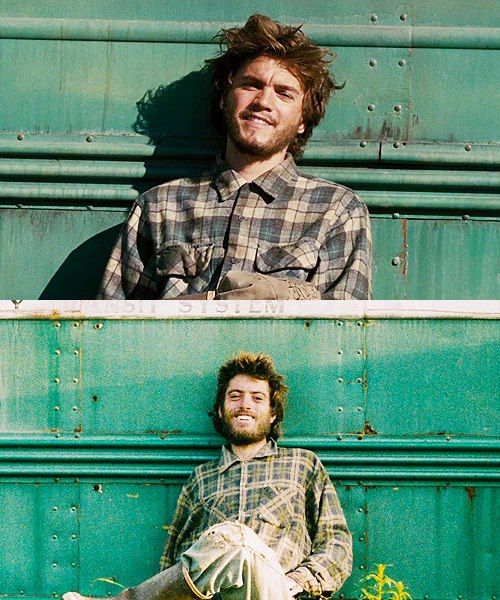
In Jonze’s defense, rarely has a director been more synonymous with a writer than Jonze has been with Charlie Kaufman, particularly early in their careers, and my qualms with Jonze’s movies are as attributable to the writing as they are to the direction (short version: after a crackin’ good start they inevitably lose their steam). Is it Jonze’s fault that Kaufman gave his best script to Michel Gondry?
For Where the Wild Things Are, Jonze shares the writing credit with Dave Eggers. Eggers is probably most well known for being the author of such books as A Heartbreaking Work of Staggering Genius and What Is the What? and for being the editor of McSweeney’s. More recently, he co-wrote the screenplay for the Sam Mendes-directed Away We Go. He parlayed his interest in Wild Things into a New Yorker story and a novelization.
The Jonze/Eggers combo (and those amazing early previews set to Arcade Fire’s “Wake Up”) was promising enough to set my expectations for Where the Wild Things Are pretty high.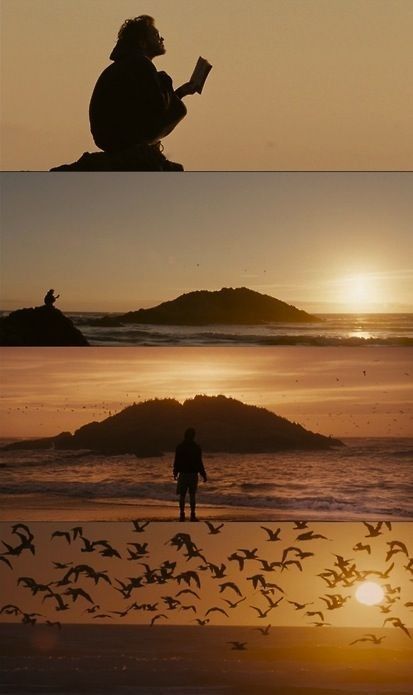 Unfortunately, even if its pleasures outweigh its disappointments, the movie fails to meet these admittedly lofty heights. Ultimately, Where the Wild Things Are is another in a series of Spike Jonze’s ambitious but flawed projects.
Unfortunately, even if its pleasures outweigh its disappointments, the movie fails to meet these admittedly lofty heights. Ultimately, Where the Wild Things Are is another in a series of Spike Jonze’s ambitious but flawed projects.
Not that there is a damn thing wrong with the first 40 seconds. Jonze immediately establishes a mischievous and subversive tone when he allows Max to deface the corporate logo before the film even properly begins. He then throws the audience right into the middle of it by following Max (Max Records) down the steps, an opening shot that skips all the way to page two of the book. As in the book, Max dons his Wild Things outfit, and the family dog initially stays one step ahead.
Unlike the book, however, the dog doesn’t stay ahead for long. Max catches the poor creature and terrorizes him with a headlock. The word “ferocious” comes to mind, a term that in the printed version would be far more likely to apply to the Wild Things themselves, what with their terrible roars and terrible teeth and terrible eyes and terrible claws.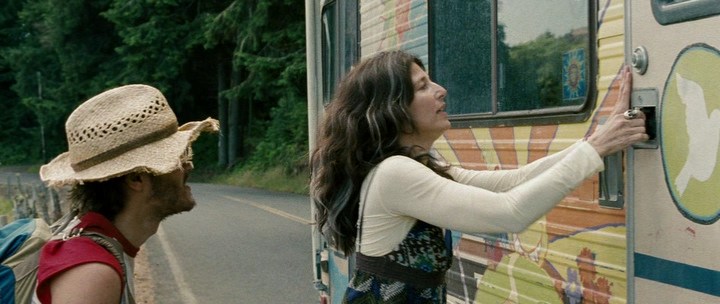 Jonze proves that the term applies to humans, as well.
Jonze proves that the term applies to humans, as well.
As unforgettable as they are, Sendak’s original drawings looked downright quaint after I was thrust into Jonze’s frenetic world. When the title abruptly appeared on the screen, chills ran down my spine. This was going to be good.
The movie maintains if not quite this level of excellence then something close to it for the next 18-minutes. Jonze and Eggers flesh out Max’s life in ways that suggest they are being both permissive with and respectful of Sendak’s original text. They give Max a sister (Pepita Emmerichs) who prefers the company of her friends to that of her brother. They give him an estranged father (a globe in Max’s room includes an engraved plaque that reads “To Max. Owner of this world. Love, Dad”). They give him a mother (Catherine Keener) who is trying to be a parent, an employee, and a girlfriend, with mixed results.
Most important of all, they give Max a profound sense of loneliness, which informs his interior world, his desire for acceptance, and his violent outbursts when this desire is thwarted. The look on Max’s face when a snowball fight goes awry is not quite as stirring as that opening scene down the steps, but it’s a close second.
The look on Max’s face when a snowball fight goes awry is not quite as stirring as that opening scene down the steps, but it’s a close second.
Around the 20th minute, however, Where the Wild Things Are shifts from the real world (for lack of a better term) to the island that the Wild Things call home. The shift is not for the best. What Jonze gains in striking visual images, he loses in emotional impact.
Impenetrable Fur
Impenetrable Fur
Themes of loneliness and belonging and family are introduced in the one world and expounded upon in the other.
The Wild Things are extraordinary to look at, almost distractingly so. The filmmakers wisely opted to blend the computer-generated images with puppet-like figures courtesy of Jim Henson’s Creature Shop. The finished product dazzles both in wide Lawrence of Arabia-like shots of a boy and his monster crossing the desert and in close-ups in which the moon-like face of Wild Thing #1, Carol (voiced by James Gandolfini) overwhelms the screen.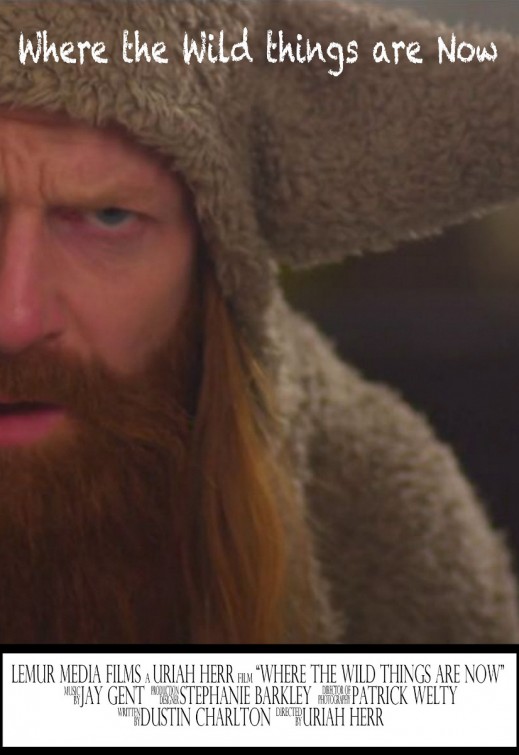 The grandeur of these wide-shot moments don’t translate well to the small screen, but you don’t need a 30 x 70 to see the sadness in Carol’s eyes.
The grandeur of these wide-shot moments don’t translate well to the small screen, but you don’t need a 30 x 70 to see the sadness in Carol’s eyes.
Yet not even coupling these enchanted images with Carter Burwell and Karen O’s beautifully understated score can make you forget entirely the holes in the storytelling. The hour on the island relies on three set pieces to move things along, which does not bode well for a strong through-line.
I can hear things coming together now, in a bit of brainstorming that borrows a few of Sendak’s “ands”: “And then they’ll frolic and then they’ll build a fort and then they’ll play a game that turns sour”. This anemic plot could be overcome if the movie maintained the rich characterization that it achieved in those opening minutes. However, when Max lands on the island, he immediately becomes its most mature inhabitant. For the most part, the Wild Things are a petty, reactive, jealous, possessive, and emotionally unstable bunch.
In short, they are children.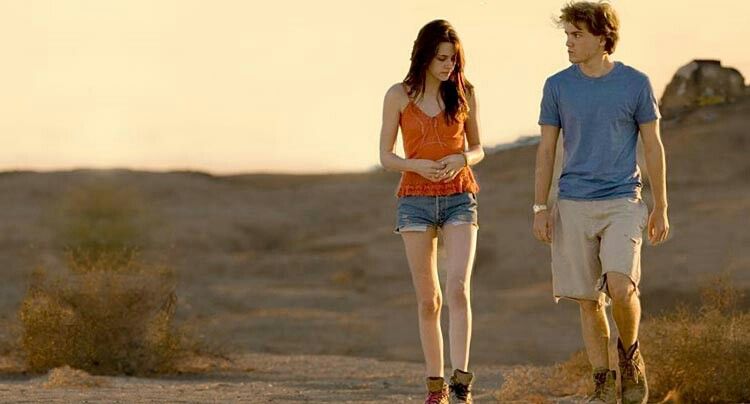 And to be blunt about it, watching children fight gets tedious after awhile.
And to be blunt about it, watching children fight gets tedious after awhile.
I see and appreciate what Jonze and Eggers are trying to do as they draw parallels between the real world and that of the island. Themes of loneliness and belonging and family are introduced in the one world and expounded upon in the other. The best example of the two worlds commenting on one another is the juxtaposition of Max surrounded by the unwelcoming ice of a crushed igloo in the real world with him sleeping in the midst of all of the Wild Things on the island, their fur creating a protective cocoon that doesn’t keep him in as much as it keeps the unpleasantness out.
However, so too, do I get confused when I draw comparisons between the two worlds, and I can’t help but think that the movie is confused, too. At times I see Carol as a proxy for Max (they both create model worlds), which makes fellow Wild Thing KW (voiced by Lauren Ambrose), a double for Max’s sister, with the ill-advised Bob and Terry (don’t ask) representing her friends.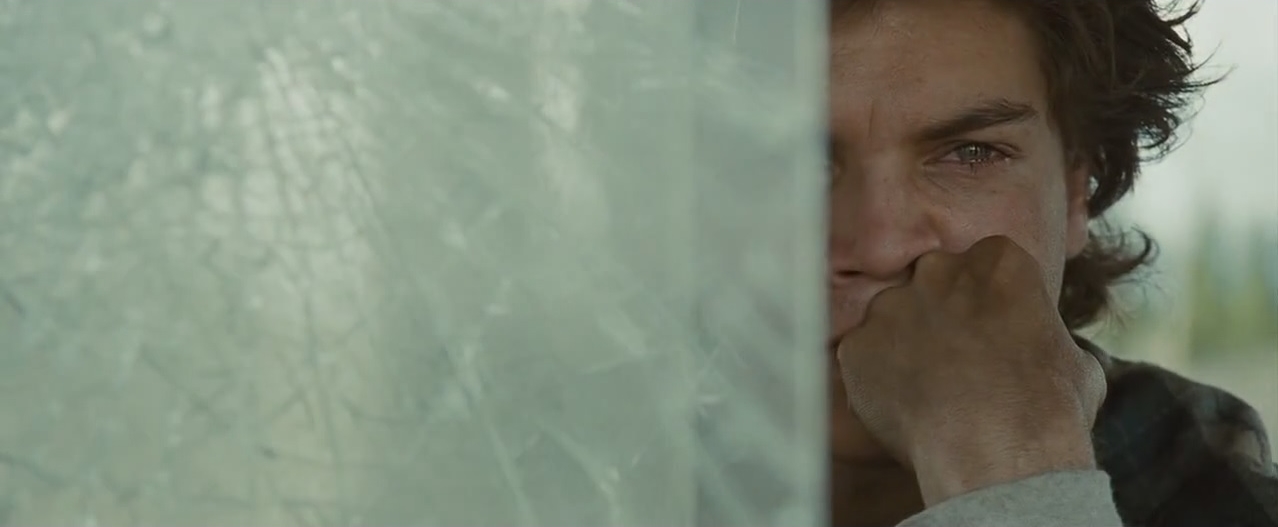
Other times, though, Carol and KW seem to be providing a glimpse into the relationship that Max’s mother had with Max’s father. I find this interpretation significantly more interesting, but I can’t reconcile this reading with the other. Not that there isn’t room for multiple points of view here, I know, but I’m not completely convinced that Jonze and Eggers made a choice, which makes it hard for me to trust the movie completely.
I think this latter approach is the direction they intended, for in the end, KW expresses the love of a mother when she says to Max, “Don’t go. I’ll eat you up, I love you so”. The line is nothing less than a revelation. Jonze and Eggers steal the line from Sendak, where it appears twice, but by this point in the movie, KW is the third character to say these words.
Most impressively, they mean something different each time. Her variation seems to get closest to the heart of the movie. Previously, she had hidden Max by swallowing him and protecting him in her belly until the danger passed, so it’s perhaps no surprise that if Max’s own mother were given a crack at the line it would probably sound a lot like KW.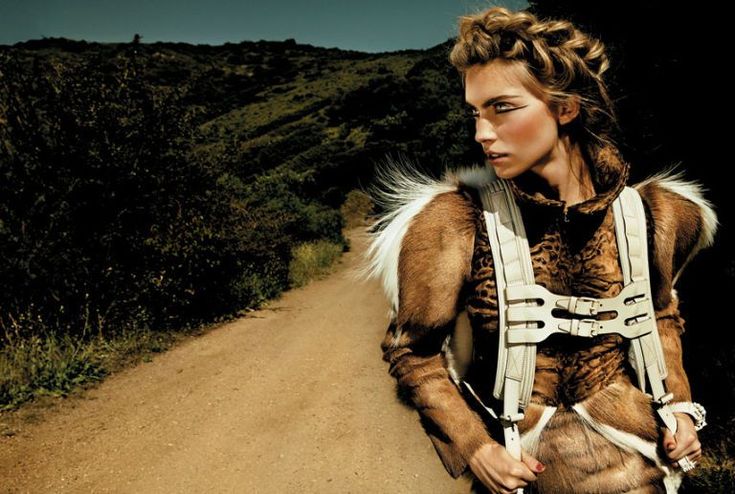
Of course, home as personified by Max’s room is where the movie eventually lands. There’s something about the end of the book—Max returning home to his warm dinner—that feels just right, and Jonze nails this sense of inevitability. He is aided in no small part by Keener, who embodies maternal love. I don’t know that I have the words to express her brilliance in this small role. Let’s just say that I believed every moment she was on screen. Just thinking about her in that final scene, comforted enough that she can fall asleep while her son eats. Well, those chills are back.
Hmm. I think I just talked myself into another star.
As much as I want to end this review right here, I am obliged to say a word about the special features. In this case, I can sum them up in there: “There weren’t any.” The copy of the DVD that I have is a “Combo Pack” that includes a regular DVD, a Blu-ray version, and digital copy of the movie. The digital copy is presumably so you can watch all of those scenes that didn’t translate to your television on a screen 1/100th of that size.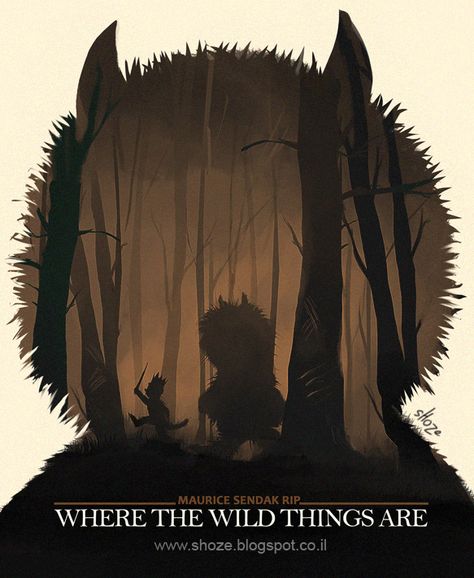
All of the special features are included on the Blu-ray disc, which I can’t access on account of not having a Blu-ray player. I think they are supposed to be available through your computer with the regular disc, but I tried it on an old PC and a new Mac, and it didn’t work in either case. The features look interesting enough. There’s a short movie that’s also based on a Sendak story, an HBO First Look, and other treats. I could probably track down at least some of these online, but at some point one wonders why they want to make it so hard. Unless you have a Blu-ray player, save yourself some money and stick with the regular version. Hell, I say stick with the regular on principle alone.
In any case, when you’re settling down for the main attraction and Max takes the piss out of the Warner Bros. sign at the beginning, feel free to cheer.
Where The Wild Things Are: inside the meaning of the movie
Cinema & TV
Posted by Carlo Affatigato
This article reveals the explained plot and the detailed events in Spike Jonze’s movie Where The Wild Things Are, revealing its meaning, symbols and storyline.
We recommend you to read it only after watching the movie, and not before, in order to preserve the pleasure of the first vision.
Where The Wild Things Are is a 2009 film by Spike Jonze, based on a very famous 1963 children’s book written and illustrated by Maurice Sendak. The book and the film basically tell the same story, but while the book is short and compact, the film adds a series of evolutions and situations introduced by the director, which take on an autonomous meaning.
In this article we will walk together the plot of the film, the differences with the book and the meaning behind the events shown.
The plot
The story of the book is simple and straightforward: Max, a child in a wolf costume, gets carried away by enthusiasm by chasing the dog around the house. His mother calls him a “wild thing”, he replies that he will eat her up and is punished: he has to go to her room without supper. The child will then imagine a world that develops in his room, from which he will take a boat for a long journey, to a distant place where he will meet real wild monsters, illustrated in the book by the author himself.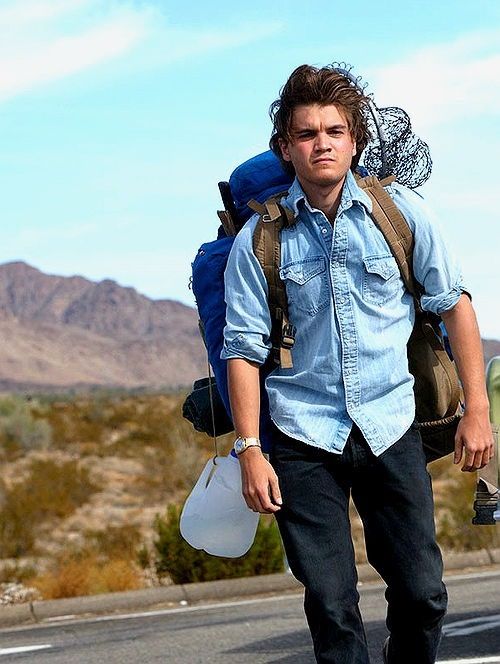 He will be declared king by the monsters and they will start a wild romp. At some point, Max will feel homesick, goes back home and finds the hot supper at home, waiting for him.
He will be declared king by the monsters and they will start a wild romp. At some point, Max will feel homesick, goes back home and finds the hot supper at home, waiting for him.
Spike Jonze’s film introduces a number of new elements, both in the situation before the imaginary world, and when Max is in the world of wild creatures: at the beginning Max lives in a family situation in which he feels not enough listened to, with his older sister and the mother who seem to pursue their interests, without worrying too much about the needs and demands of the child. But when Max arrives in the land of wild things, we discover that his way of being king, guided by childish enthusiasm and imagination, generates joy and happiness, true, but it also has its limits when conflicts emerge, both between monsters and between him and the monsters themselves. In the final part of the film the monsters will find themselves doubting that he is a good king, returning to a situation of self-managed chaos.
Where the Wild Things Are Official Trailer #1 - (2009) HD
Watch this video on YouTube.
The meaning of
Where The Wild Things Are explainedThe book tells the story of a child who is punished, who creates his own world in which he feels loved as he would like, only to discover that he wants to return to the family context, being welcomed again warmly. The themes underlying the book are therefore the concept of punishment (how legitimate it is or not), that of being loved (the different ways in which one is loved, and whether severity and rules really mean being less loved or not) and the way to manage the energy and the irrepressible enthusiasm of being a child.
The film extends these kinds of themes with new contributions made by the director. Also in the film, Max finds himself wishing to be loved as he would like, to have the attention he needs, and finds in the wild things a community that elects him as king, demonstrating that they love him and believe in him. The wild creatures need someone to guide them, and that makes Max feel important. According to some, the wild creatures in the film represent Max’s emotions, and the story thus takes the form of the process in which the child learns to manage his emotions, but in reality the film is even more complex than that. Wild creatures are uncontrollable and spontaneous beings just like Max’s enthusiasms and feelings are. In the position of king, however, Max finds himself discovering the need to manage what is spontaneously irrepressible. In this way the child discovers why it becomes necessary to be an adult.
The wild creatures need someone to guide them, and that makes Max feel important. According to some, the wild creatures in the film represent Max’s emotions, and the story thus takes the form of the process in which the child learns to manage his emotions, but in reality the film is even more complex than that. Wild creatures are uncontrollable and spontaneous beings just like Max’s enthusiasms and feelings are. In the position of king, however, Max finds himself discovering the need to manage what is spontaneously irrepressible. In this way the child discovers why it becomes necessary to be an adult.
The meaning of the film Where The Wild Things Are is therefore in this process of discovery by the child: following the enthusiasm means enhancing the joy and pleasure of living in the moment, but it does not help when it is necessary to manage excesses, conflicts, fears. What happens in the world of the wild things is that natural frictions arise between individuals, doubts, fears, overflowing behaviors, and in the face of those situations Max discovers that he does not have the tools (typical of adulthood) to contain and manage them: he just keeps adopting his child instincts, and when he sees that it’s not effective, he withdraws into himself by moving away.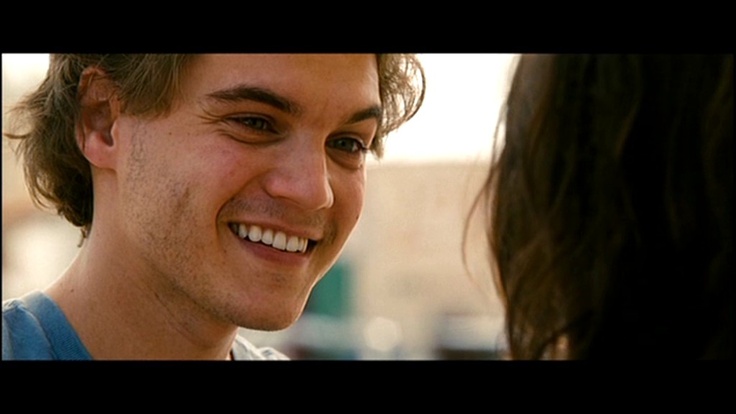 In that imagined world, therefore, Max learns the need to go towards the adult stage, as a way to balance situations of discomfort when the child’s enthusiasm does not work.
In that imagined world, therefore, Max learns the need to go towards the adult stage, as a way to balance situations of discomfort when the child’s enthusiasm does not work.
The film therefore focuses less on the concept of punishment (Max actually moves away spontaneously) and more on the balance between being a child and being an adult. In this confrontation between the two sides, Max learns the importance of both.
explainedmeaningmovieplotstory
Published by Carlo Affatigato
Auralcrave founder, web content creator since 2010, life coach, husband, father, fond of art, culture, society, psychology, economics, politics, games. He believes that every area of knowledge has stories worth to be told and he's sure that doing it makes the world a better place. View all posts by Carlo Affatigato
report this adRigid molle panels, IR patches. Urban backpacks and bags. Army equipment. Bikepacking
Rigid molle panels, IR patches. Urban backpacks and bags.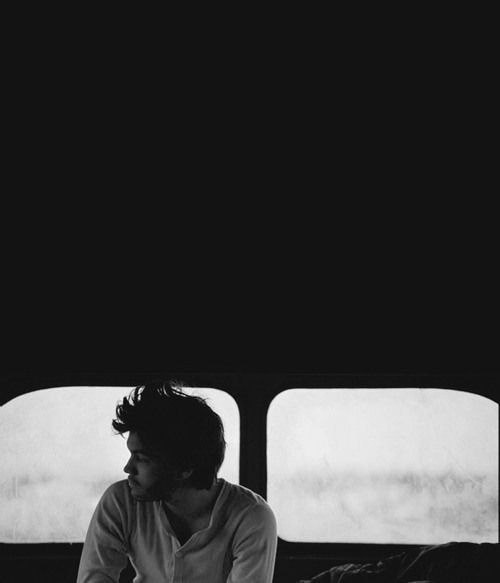 Army equipment. Bikepacking - bags for cycling. We produce and sell!
Army equipment. Bikepacking - bags for cycling. We produce and sell! Panels for backpacks
Rigid malls
2 390 ₽
Add to cart
Rigid malls
2 590 ₽
Add to cart
Rigid molle platforms
1 490 ₽
Add to cart
Rigid molle platforms
1 590 ₽
Add to cart
Rigid molle platforms
2 090 ₽
Add to cart
Rigid molle platforms
2 190 ₽
Add to cart
Rigid molle platforms
1 790 ₽
Add to cart
Rigid molle platforms
259$0
Add to cart
Automotive panels
Rigid malls
2 790 ₽
Add to cart
Rigid molle platforms
1 690 ₽
Add to cart
Rigid molle platforms
259$0
Add to cart
Rigid molle platforms
2 990 ₽
Add to cart
IR Patches
IR patches
1 190 ₽
Add to cart
IR patches
2 090 ₽
Add to cart
IR patches
1 190 ₽
Add to cart
IR patches
1 190 ₽
Add to cart
Organizers
Organizers
1 390 ₽
Add to cart
Organizers
1 390 ₽
Add to cart
Organizers
1 990 ₽
Add to cart
Organizers
990 ₽
Add to cart
Page not found
Ivy's choice
Gentiles
Select IVI
Belorussian stationSelection IVI
Zhmurki
Select IVI
Star
Shirli-MIRLI
Courier
9000Kokoko
Evie's choice
The guy from our cemetery
Evie's choice
I'm losing weight
Evie's choice
Evie's choice
3Evie's choice
0003 Legend No.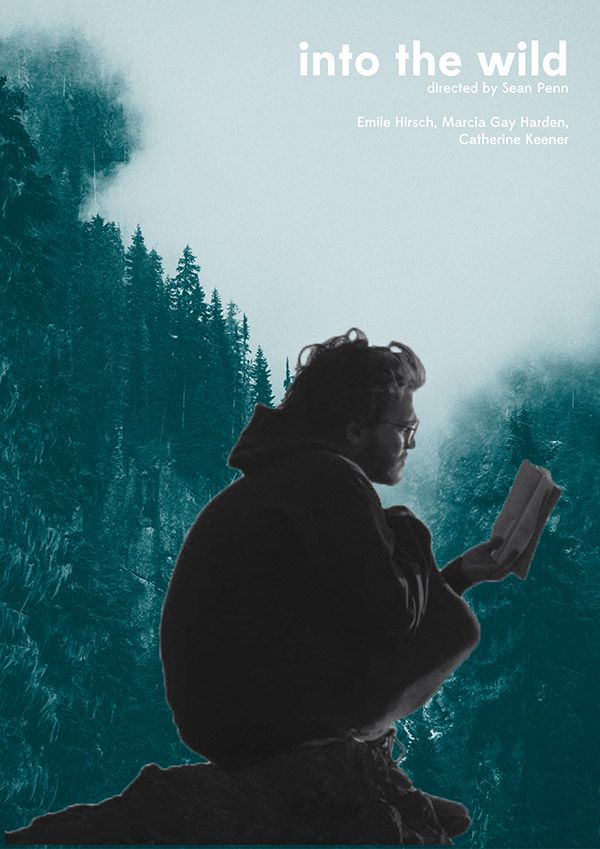 17
17
Ivi's choice
Welcome, or no outsiders allowed
Ivi's choice
Bears of Kamchatka. The beginning of life
Choice IVI
Exile
Select IVI
Select IVI
Andrey Rublev
View all
Marathon of desires
Select
Star
Mermaid
men!
About love. Adults only
exclusive
Higher the sky
Select IVI
Created with IVI
Series IVI
Tenderness
View all
Girls
Wishes
Seven dinners
Very female stories
Created with IVI
outside the access zone.
TV series Evie
Tenderness
Mistresses
created with Evie
Artek. Big trip
Almost macho
exclusive
Superigents
Legends of eagle
Bondo
My dad - Leader
Young people
Dawn of the Great Stepi
Perfect wife
Great behavior
Gudbay, America
Family 9000 team
Puncher
Duel of queens
exclusive
BOOMERANG
created with Evie
Decider: Brother
Aunt Tanya
created with Evie
Non-football
Marusya foreva!
exclusive
Kelin special purpose
exclusive
At least in the cinema (in Kazakh with Russian subtitles)
created with Evie
Save Kolya!
exclusive
Wizard
exclusive
Johan (in Kazakh with Russian subtitles)
created with Evie
Walk, Vasya! Date in Bali
Happiness in the envelope
Exclusive
Film Ivi
Fir -trees 8
Exclusive
Girls are different
Seven
outside the access zone
Wishes
Exclusive
solved.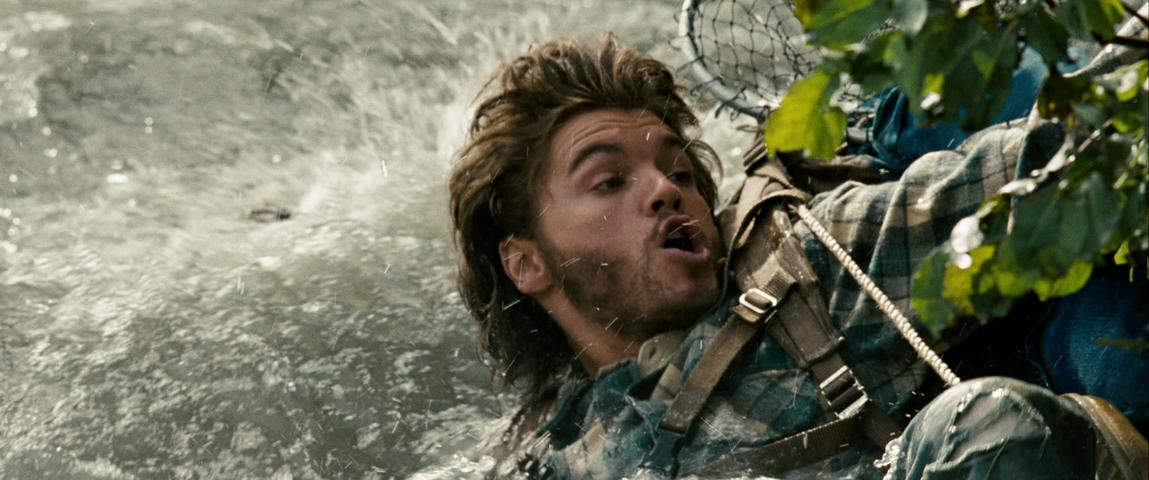 Zero
Zero
Psychology of crime. Slipper not for Cinderella
Swallows of Christ
Newest Year!
exclusive
One breath
Hot beauty
exclusive
Billion
ToyKhana (in Kazakh with Russian subtitles)
created with Evie
Evie film
Zhok Bazaar, Mexico! (in Kazakh)
View all
Moscow Tears do not believe
White Kit
Choice IVI
Legend No. 17
Gentlemen of luck
Exclusive
DEACTION
Dawn
Goodbai, America
Ivy's choiceexclusive
Temporary difficulties
Heavenly team
PANCHER
Created with IVI
decided: brother
Ghost
Choice IVI
Belorussky station
White dew
Spring on Zarechnaya Street (Color Version)
Boomer: Boomer: Boomer: Boomer: BURCOM Film II
Guys!
Cruel romance
The same Munchausen
The last test
Racketeer
Taras Bulba
exclusive
Solved.